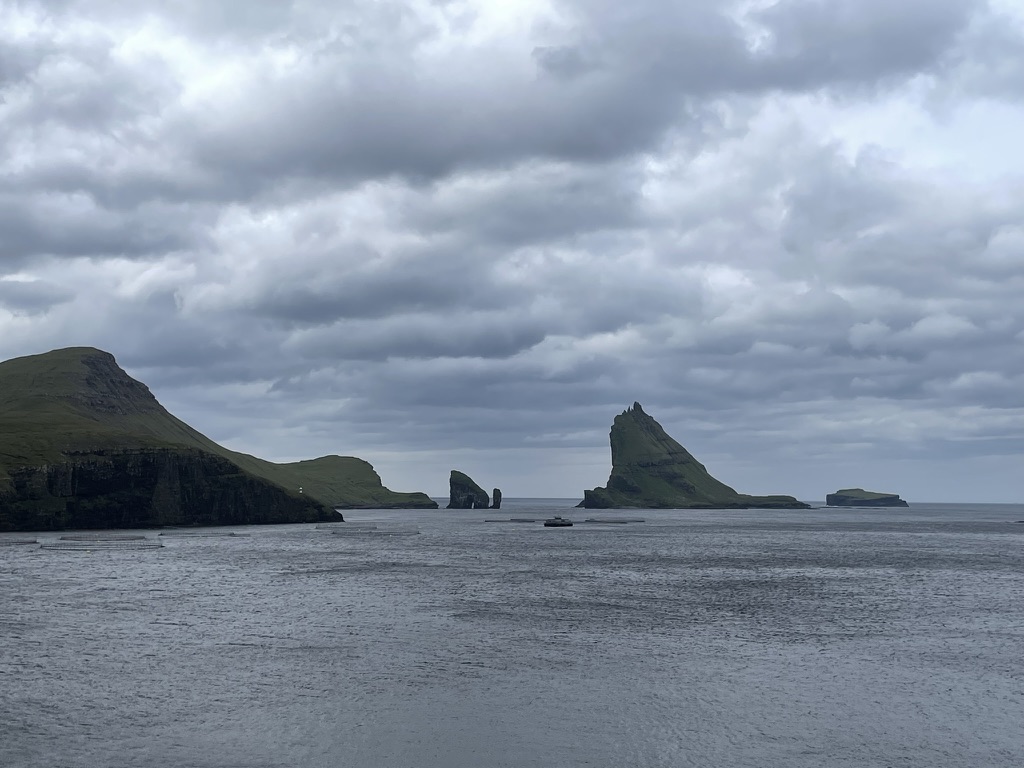At the end of our splendid trip viewing the fjords in Norway (by bus, train, car, plane, taxi and funicular!) my husband Jack and I spent three days on the remote and stark Faroe Islands. Part of Denmark, the Faroe Islands (in total square miles, smaller than London) are located halfway between Norway and Iceland, 200 miles north, northwest of Great Britain. In other words, they are pretty much in the middle of nowhere.
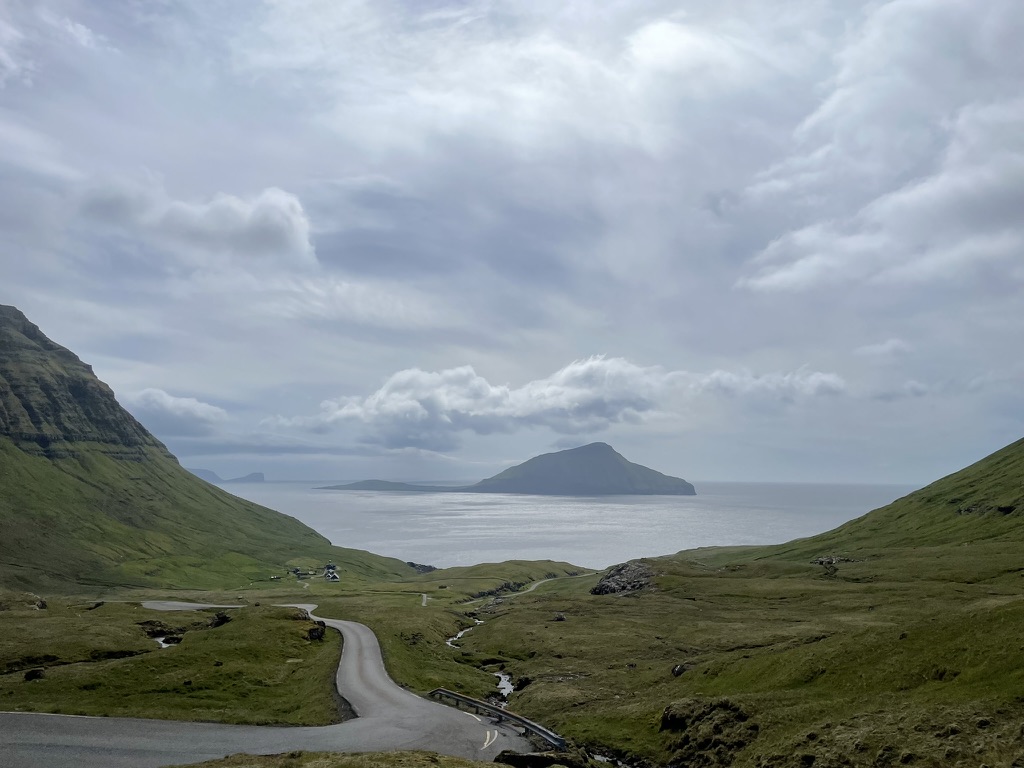
And, when you deplane and look around, it’s LOOKS like you’re in the middle of nowhere. The landscape is as rugged and harsh as I’ve ever seen.
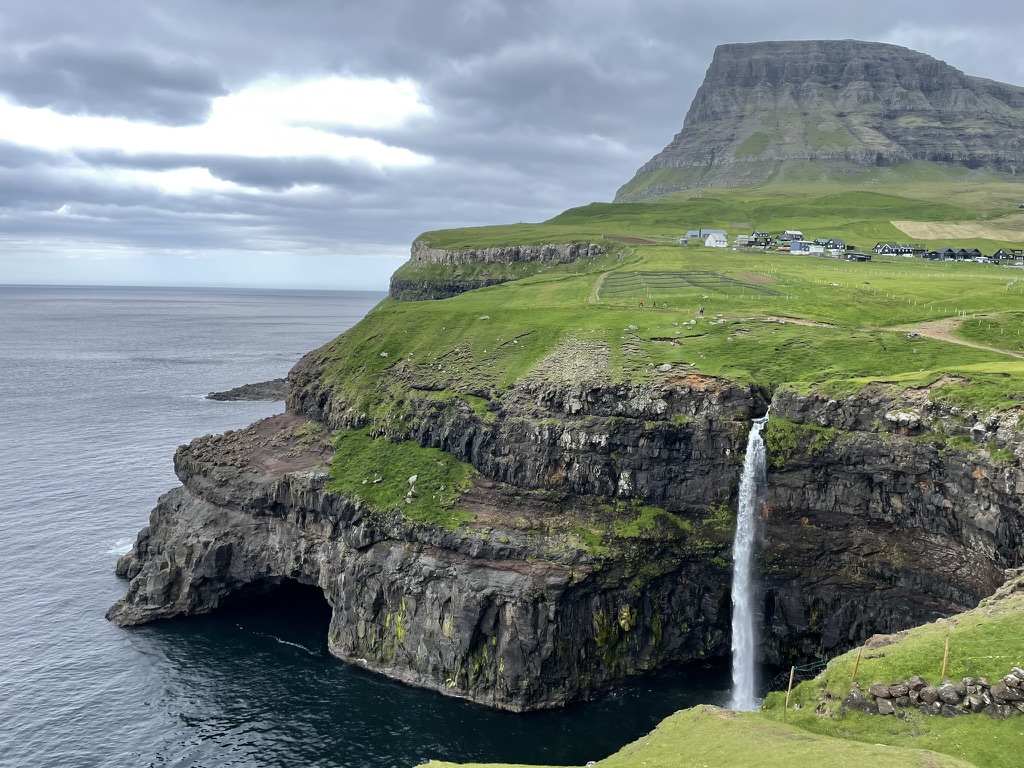
Huge rocky cliffs plummet straight into the ocean and everything is covered with grass. The only trees in the entire country are the ones planted and maintained in gardens in the towns and villages. Trees don’t thrive here because the soil is thin but also because the fierce winds carry a huge amount of salt spray from the oceans, making it hard for trees to thrive. For a forest lover like me, it was disconcerting. Every time I thought I spotted a small tree or shrub, closer inspection proved that it was only another sheep, of which there are multitudes.
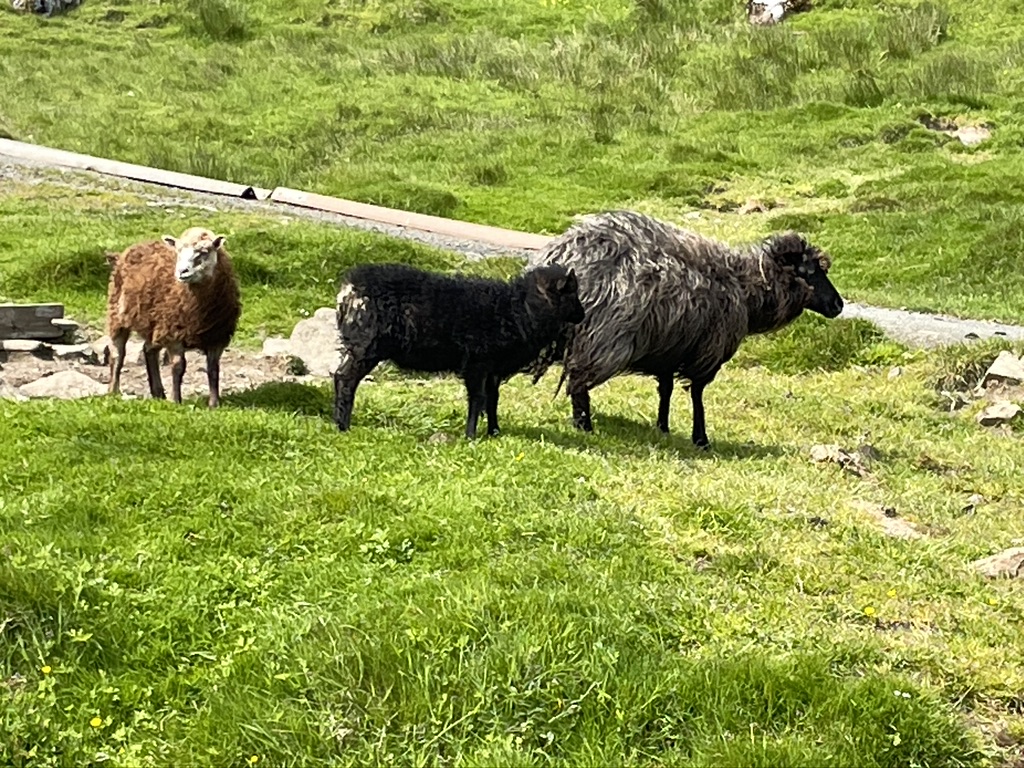
The population of the Faroe Islands is 54,000 people and has an estimated sheep population of 80,000. If you want to know what the Faroe Islands looks like from the sheep’s point of view, click on the link below or google Sheepview360.
https://www.youtube.com/watch?v=ywdqiyoQNgQ
The Faroe Island tourist group strapped a 360 camera to the back of a sheep and let her go. It’s a VERY accurate view of what the islands look like. There were also a smattering of the beautiful Highland cows.
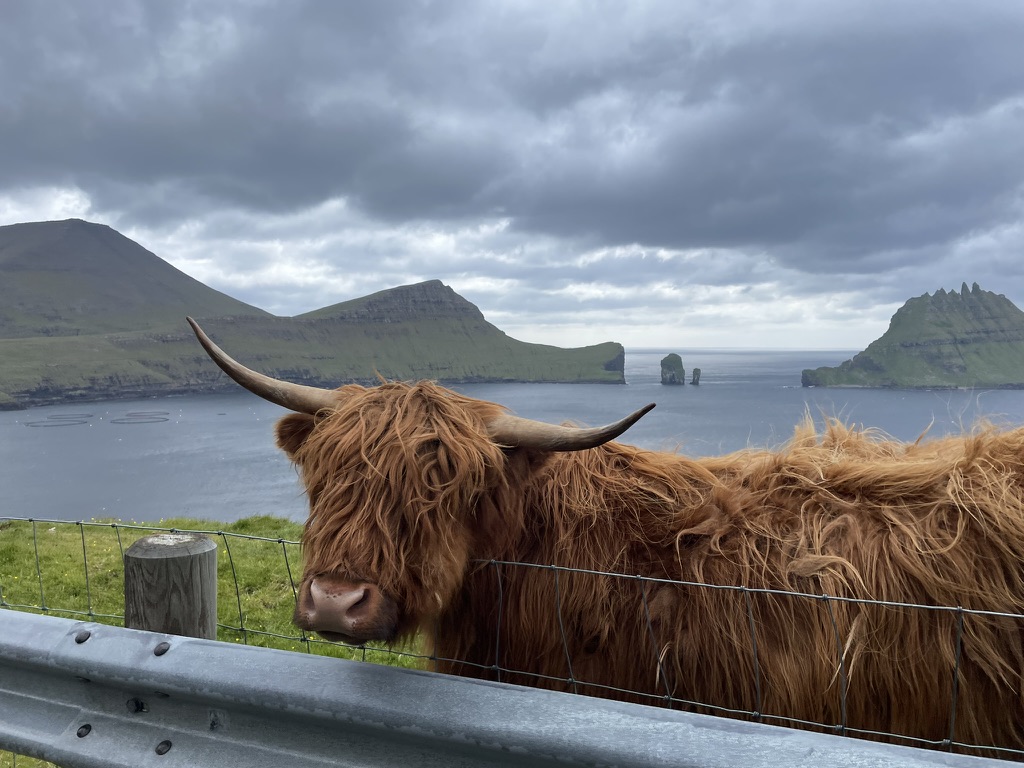
Actually, once I got over the fact that there were no trees, I began to appreciate the lush, exuberant grass. With 300 days of rain, which we experienced first hand, the grass is amazingly green and very abundant. During the Viking days of the 9th century, the roofs of most of the buildings were covered with turf. Today, with a revival of traditional ways of doing things, many of the newly constructed, as well as many of the older houses have grass roofs. It provides protection from the rain and wind and has an insulation rating of R-19.
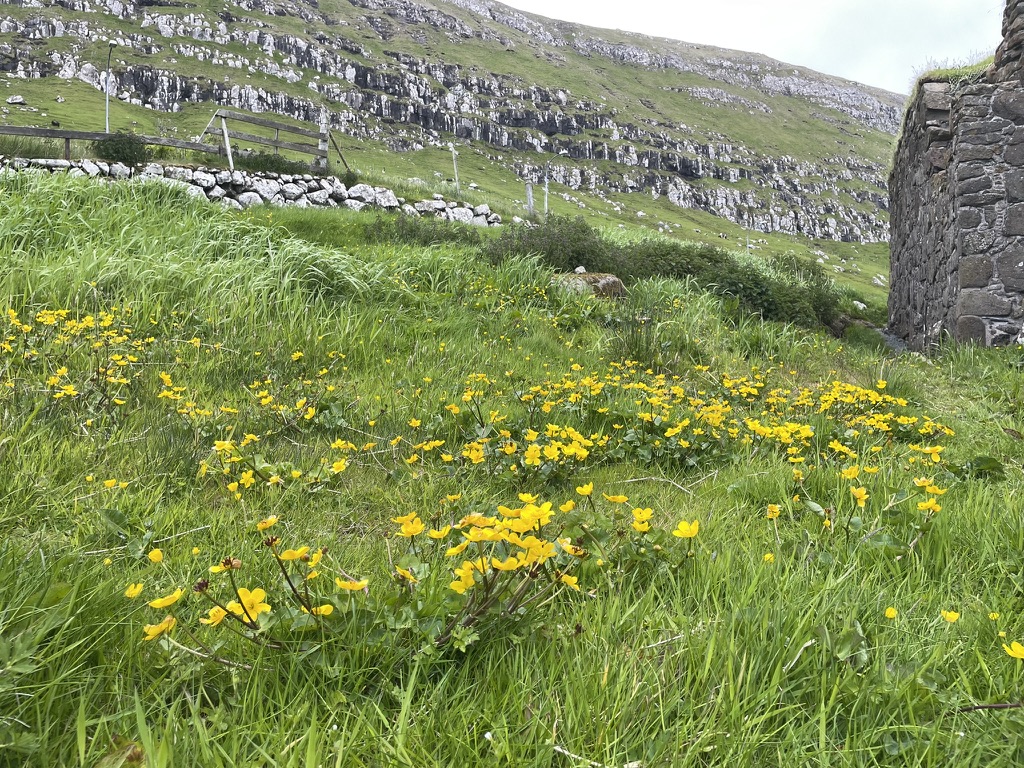
The sod for the roofs comes from good pasture land. Pieces of sod are cut one square foot and about 3 inches thick. Once on the roof supports, they are watered in and nurtured like any good lawn. Generally speaking, extra irrigation is not necessary due to the abundance of rainfall. But, the weather can change at the drop of a hat. Locals say that the weather is so volatile, Vivaldi could have composed The Four Seasons in a single day on the Faroe Islands.
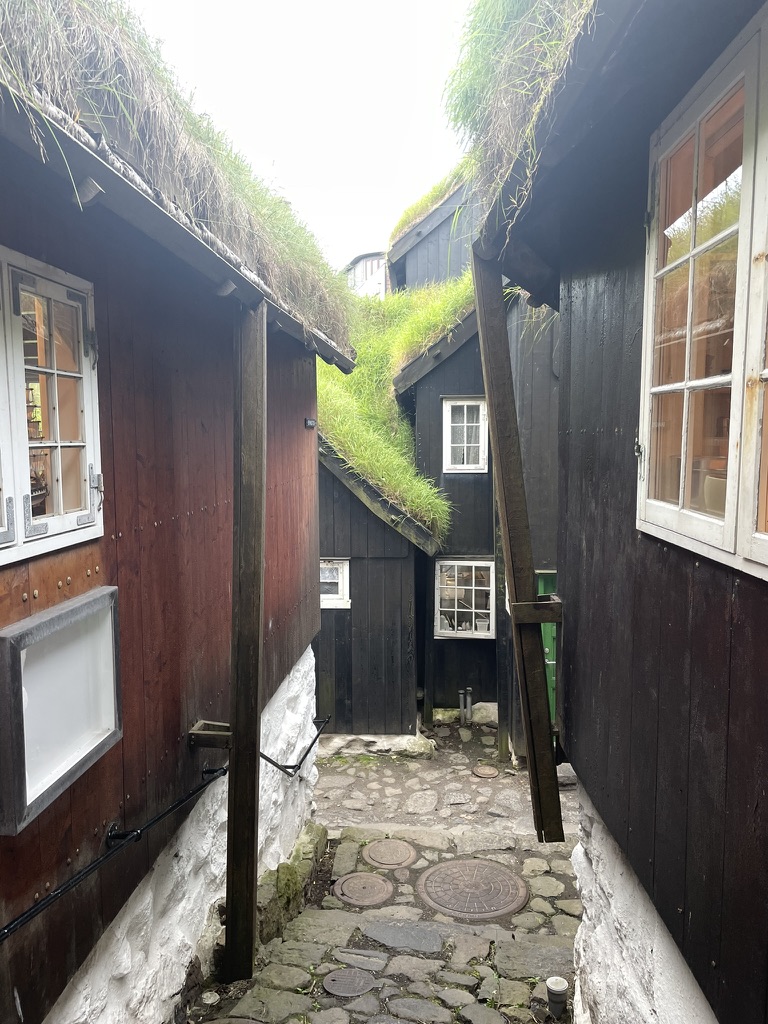
We are, I think, a product of the land and environment from which we come. For me, a child of forest and flowers, the Faroe Islands seemed to be harsh and barren. But perhaps some of the Faroese would find my world crowded and claustrophobic. But that’s what travel is all about, right? discovering and learning to appreciate worlds that are not our own, expanding our horizons and learning to love the Other.
